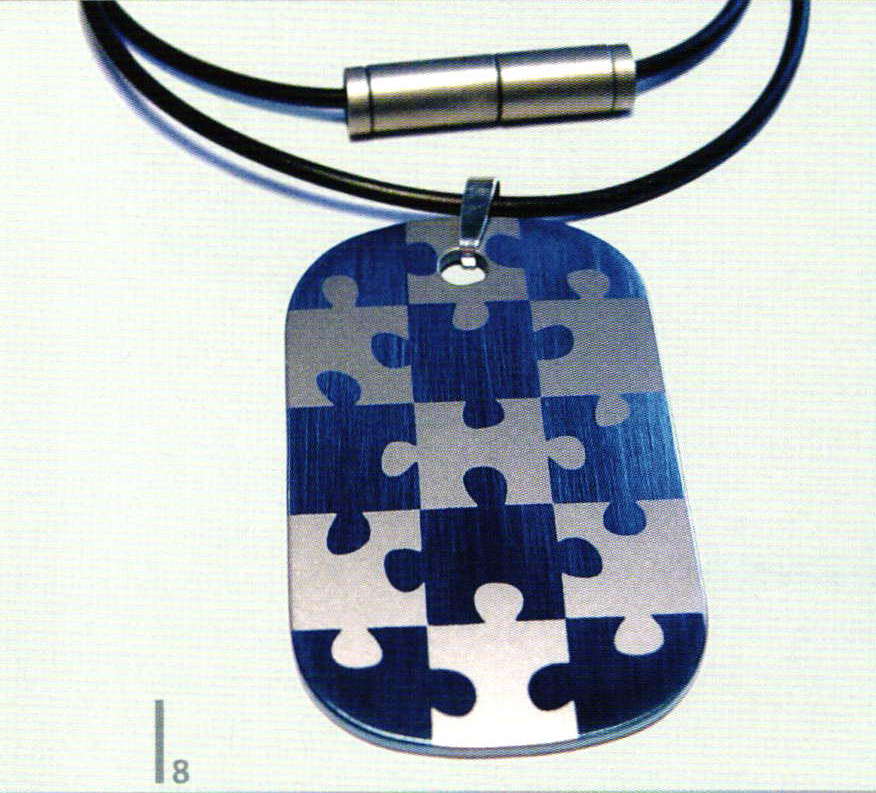

Metal Titanium
2 Minute Read
The metal titanium, named after the oldest deity of Greek history, was not discovered until relatively recently. Perhaps the gods wished to keep the metal for themselves, due to its unique characteristics. The fact that it is the 10th most commonly occuring element on the earth means that it is by no means scarce.
However, titanium long escaped the inquisitive eye of man as it never appeared in elementary form, but chemically bonded to other ores or minerals. It was the clergyman and amateur chemist William Gregor who first noted titanium in iron ore in 1791. Three years later it was also discovered in rutile ore by the German chemist Heinrich Klaproth, who gave the new element its godly name. In 1910 Matthew A. Hunter produced pure titanium metal for the first time, with William Justin Kroll developing a technical production procedure for utilizing titanium commercially 36 years later, a process that bears his name. However, the effort required in the production of pure titanium remains considerable. The metal has lost nothing of its esoteric, extravagant flair.
Exposed to the air, titanium develops an oxide protective coating, rendering it extremely resistant to corrosion. Similarly noteworthy is its high stability at relatively low density. Titanium is extremely light and has low thermal conductivity. Today, it is used to protect the Space Shuttle as it reenters the earth's atmosphere, as well as being used as a high-tech implant. Its wearing comfort and freedom of allergy means that it is also a popular metal for watch casings and jewelry.
Titanium jewelry tends to be presented as the lighter and more skin-tolerant brother of stainless steel. The creative potential of the metal lies in the unique opportunity presented to color the surface by means of anodized oxidation. Reiner Brandtner and Hans-Georg Pesch caused a sensation in the early 1980s with their colored titanium jewelry. The objects stand out with their spectrum of alternating shades, ranging from steel blue to red, orange and yellow tones. It is possible to create the finest nuances and flowing transitions. The difficulty of working the hard metal means that designs are often strict of form, with added allure provided by the coloration. The two artists were far ahead of their time with their work. Perhaps the time will come where jewelry designers rediscover titanium for their works.
The exciting, colored surface design is lust one aspect of the metal. Titanium combines the stability of steel with the lightness of aluminum. This permits the realization of unique, sculptural and kinetic jewelry designs. Titanium can be used to create both large, solid jewelry items and filigree objects for everyday use.
by Axel Henselder
You assume all responsibility and risk for the use of the safety resources available on or through this web page. The International Gem Society LLC does not assume any liability for the materials, information and opinions provided on, or available through, this web page. No advice or information provided by this website shall create any warranty. Reliance on such advice, information or the content of this web page is solely at your own risk, including without limitation any safety guidelines, resources or precautions, or any other information related to safety that may be available on or through this web page. The International Gem Society LLC disclaims any liability for injury, death or damages resulting from the use thereof.
Related Articles
Something Special in NE Wisconsin
Metalsmith ’96 Spring: Exhibition Reviews
Gayle Saunders Exhibition
Fritz Maierhofer: Message on the Issues
The All-In-One Jewelry Making Solution At Your Fingertips
When you join the Ganoksin community, you get the tools you need to take your work to the next level.
Trusted Jewelry Making Information & Techniques
Sign up to receive the latest articles, techniques, and inspirations with our free newsletter.